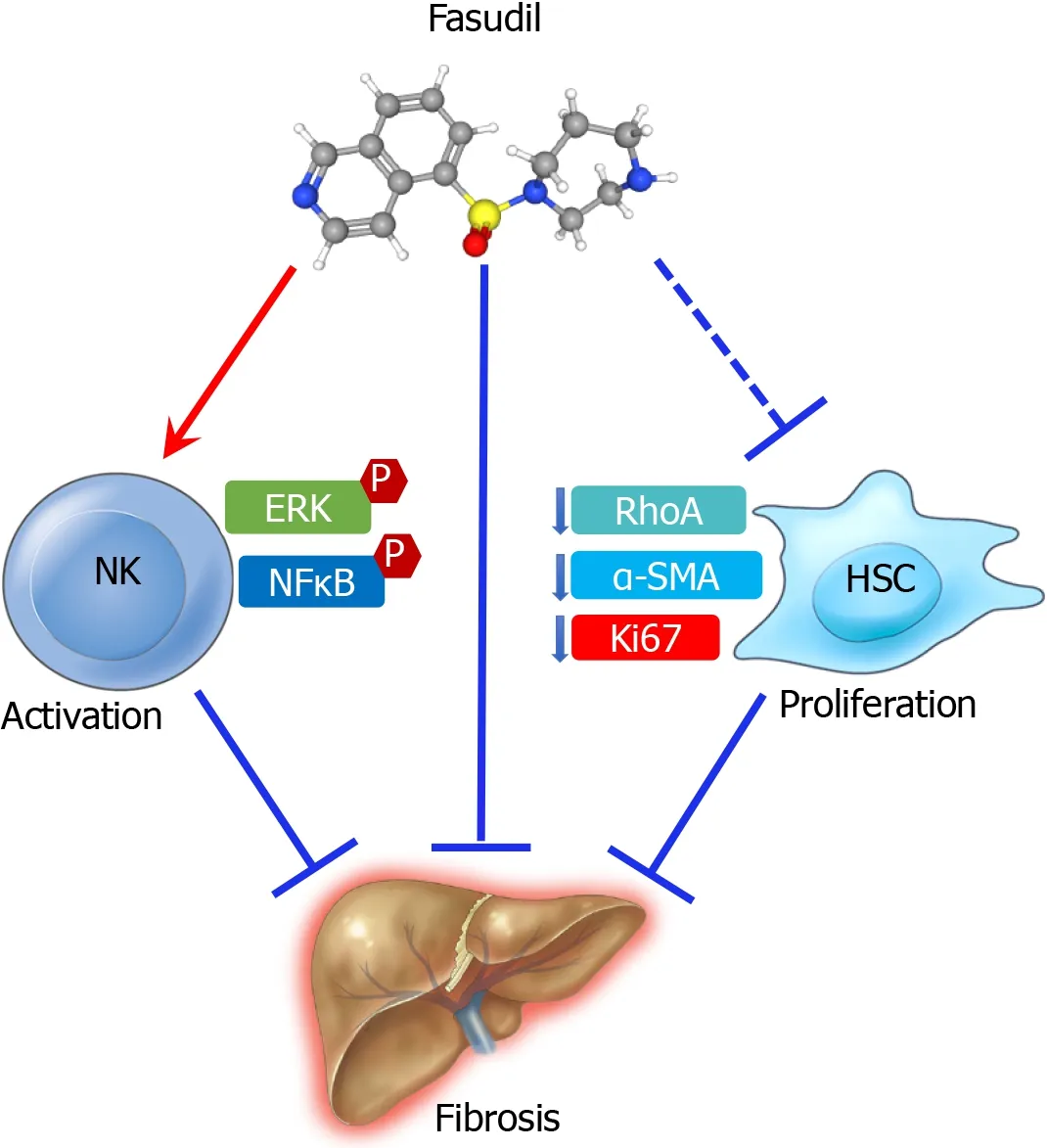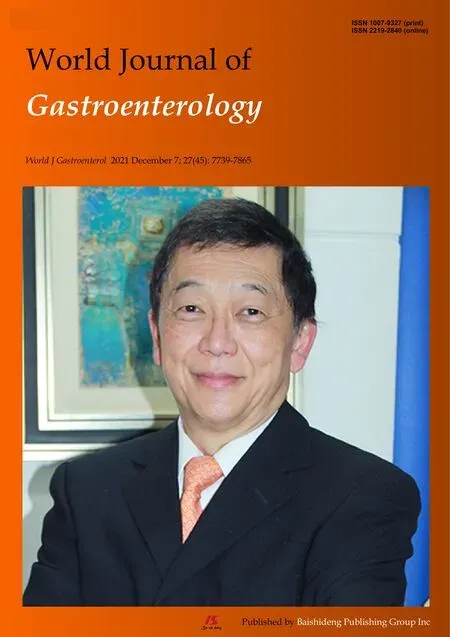Therapeutic potentials of fasudil in liver fibrosis
Yue Xi,Peng-Fei Xu
Abstract Fasudil has the potential to prevent liver fibrosis by activating natural killer cells and inhibiting the proliferation of hepatic stellate cells. Fasudil may be a promising clinical therapeutic drug for the prevention and treatment of liver fibrosis.
Key Words: Fasudil; Liver fibrosis; Natural killer cell; Hepatic stellate cell; Clinical therapeutic drug
TO THE EDITOR
We read with great interest the recent basic study by Hanet al[1 ], that reported Fasudil, a potent RhoA/ROCK inhibitor and vasodilator, prevents and treats liver fibrosis and liver injury. They found Fasudil alleviates thioacetamide (TAA)-induced liver fibrosis in mice. The anti-fibrotic phenotypic exhibition of Fasudil is impressive.

Figure 1 Schematic illustration depicting that fasudi prevents and treats liver fibrosis by activating natural killer cells and inhibiting hepatic stellate cells proliferation. NK: Natural killer; HSCs:Hepatic stellate cells.
P-Editor:Wang LL Hepatic fibrosis is the formation of scar tissue in response to chronic liver damage,such as chronic hepatitis and hepatic steatosis[2 ]. Currently, there is no pharmacotherapy available approved by Food and Drug Administration (FDA) in the treatment of liver fibrosis[3 ]. Fasudil has been approved in Japan and China for the prevention of artery tightening and ischemia caused by cerebral vasospasm and pulmonary hypertension[4 ]. Due to its safety and efficacy, Fasudil might be a promising clinic agent for the prevention and treatment of liver fibrosis.
Hepatic stellate cells (HSCs) and natural killer (NK) cells play key roles in the pathogenesis of liver fibrosis. They isolated NK cells from mice treated with vehicle,TAA, or TAA and Fasudil and treated the NK-92 cells with different concentrations of Fasudil. These results showed that Fasudil robustly promotes NK cell activation.When discussing the effect of Fasudil on HSCs, they used human stellate cell line LX2 cells and observed that Fasudil directly induces apoptosis and inhibits the proliferation of LX2 cells. LX2 cell is indeed a model for the study of HSC activation. But to investigate HSCs activation, the model of primary HSCs subjected to culture activation andLX2 cells subjected to the stimulation of the potent profibrogenic cytokine transforming growth factor-beta 1 (TGF-β1 ) and then treated with the drugs under study are more widely accepted. Here, the authors proposed that Fasudil inhibited liver fibrosis by blocking HSCs activation by directly using the LX2 cells treated with Fasudil, which is far-fetched and hard to interpret. As primary HSCs are activated by prolonged culture, HSCs isolated from human or mouse livers and treated with the studied drug may be a more comprehensive approach to evaluate HSC activation.
Other studies also showed that Fasudil has anti-fibrotic phenotypic exhibition in rat models of hepatic fibrosis, such as Fasudil alleviated hepatic fibrosis in type 1 and 2 diabetic rats and carbon tetrachloride (CCl4)-induced rat liver injury[5 -7 ]. Combined with these studies, we proposed that Fasudil is potential for the treatment of liver fibrosis through multitargeted effects, as outlined in Figure 1 . Taken together, Fasudi is a promising medication for the prevention and treatment of liver fibrosis.
 World Journal of Gastroenterology2021年45期
World Journal of Gastroenterology2021年45期
- World Journal of Gastroenterology的其它文章
- Diagnostic biomarkers for pancreatic cancer: An update
- Clinical presentation of gastric Burkitt lymphoma presenting with paraplegia and acute pancreatitis: A case report
- In-hospital mortality of hepatorenal syndrome in the United States: Nationwide inpatient sample
- Multimodality management of gallbladder cancer can lead to a better outcome: Experience from a tertiary care oncology centre in North India
- MicroRNAs expression influence in ulcerative colitis and Crohn's disease: A pilot study for the identification of diagnostic biomarkers
- Gut microbiome in allogeneic hematopoietic stem cell transplantation and specific changes associated with acute graft vs host disease
